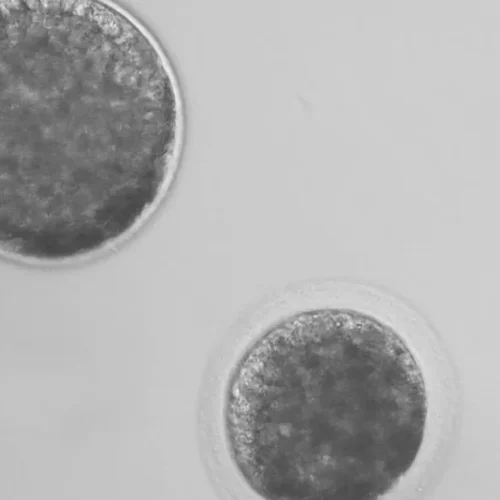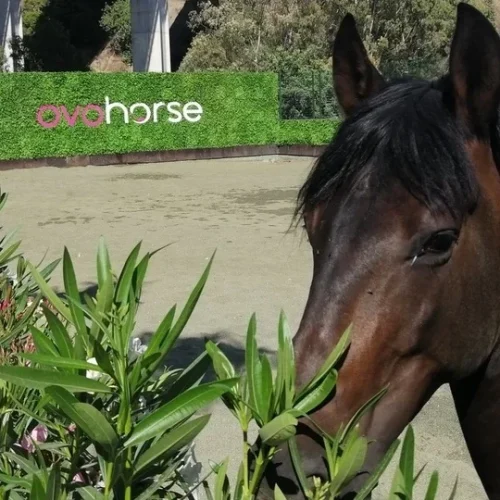If we travel back in time to the origins of horses, we must go as far back as 3,500 B.C. This is when the first records and domestication of horses were documented in the region of Kazakhstan. Since then, horses have evolved within the equid family and have been domesticated by humans, becoming—alongside dogs—one of the animals that has always been closest to mankind.
At Ovohorse, specialists in equine reproduction, we’ve compiled the most fascinating facts about this noble and spectacular species.
8 horse facts you probably didn’t know
Tabla de contenidos
Yes! Horses and mares can sleep while standing. They can also sleep lying down. Horses need to rest for at least 30 minutes per day to achieve a complete restorative sleep cycle—unlike humans who need 7–8 hours on average. Several factors can affect their sleep routine such as weather, space, or physical impairments like musculoskeletal conditions (e.g., arthritis).
2. Horses are herbivores
The equine species has been herbivorous since its origins. Their teeth (grinding molars to break down fibrous plant matter), eye positioning (side-facing to watch for predators), and digestive system are all characteristics typical of herbivores.
3. Horses can’t burp
Horses cannot burp, vomit, or even breathe through their mouths like humans. A horse’s digestive system is one-way only, unlike other animals. While it is highly efficient at processing fibrous and tough foods, its long, unidirectional digestive tract can lead to gastrointestinal issues.
4. A horse’s teeth can tell you its approximate age
While it’s not possible to determine a horse’s exact age from its teeth, you can estimate it. Horses have teeth that erupt continuously, meaning they grow as they wear down. A foal is born without teeth, but from the age of 6 onward, a method known as the Galvayne’s Groove can help estimate the horse’s age. Though not exact, it allows breeders to determine whether a horse is between 10 and 30 years old. The groove appears at age 10 near the gumline, reaches halfway down the tooth by age 15, and extends to the bottom of the incisor by age 20.
5. Horses can live over 30 years
One of the most common questions is: How long can my horse live? Thanks to advancements in nutrition, care, veterinary medicine, and more, the average equine lifespan now exceeds 30 years.
6. Many Arabian horses have one less vertebra than other breeds
The Arabian horse is the origin of many other horse breeds. They also possess unique features such as a refined, dished face. Interestingly, Arabian horses typically have one fewer vertebra, rib, and tail bone compared to other breeds.
7. Horses are herd animals
Although they might seem solitary, living alone can be quite stressful for a horse. Horse companionship can come from another equine stall mate or even from another species—like a goat, donkey, or mule. Even a dog can become a great companion for a horse.
8. Most white horses are actually gray
Few horses are born white; they usually start out gray or even dark-colored and gradually lighten. Some are born chestnut or nearly black and later turn white. In fact, these horses aren’t classified as white, but as gray.






